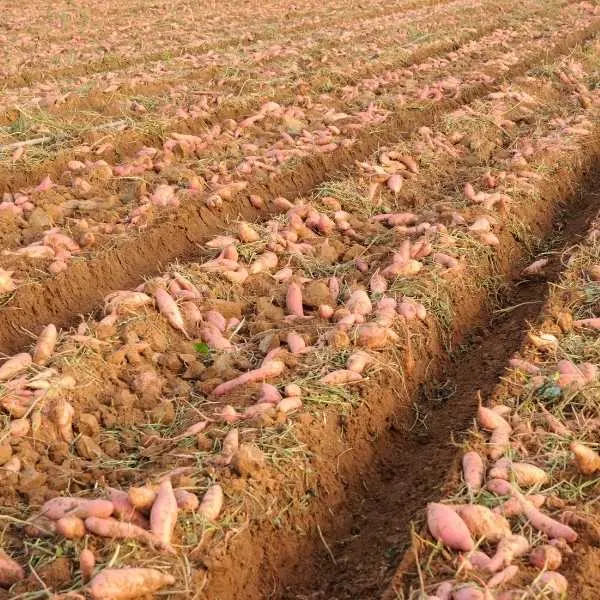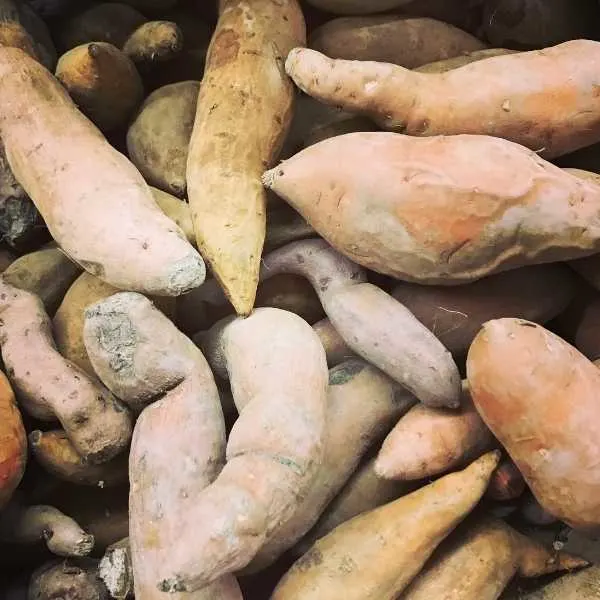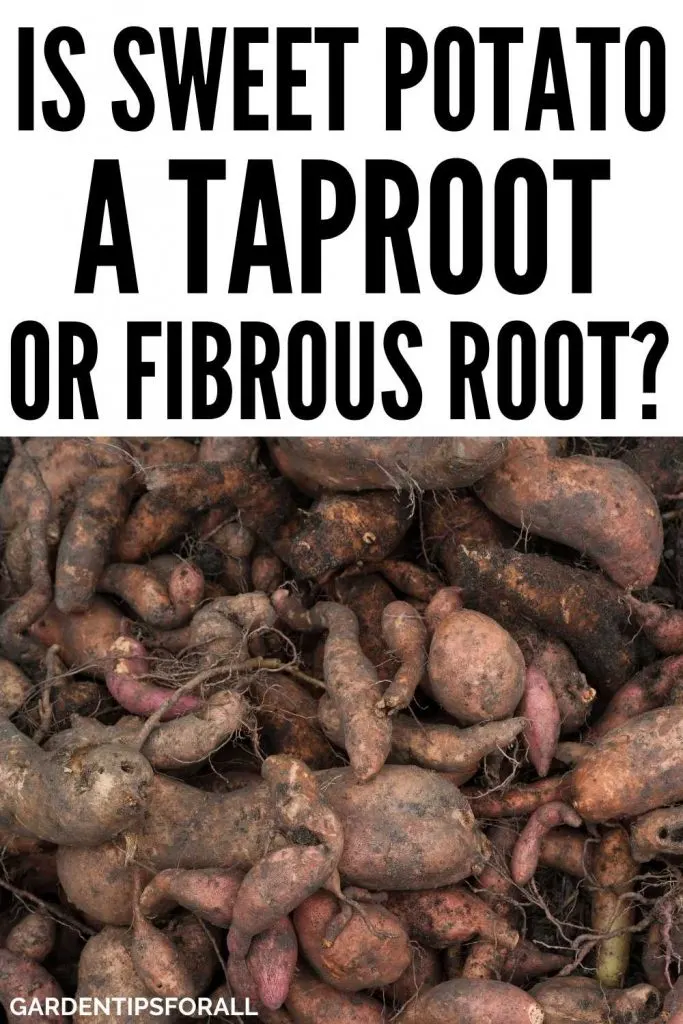Is Sweet Potato a Taproot or Fibrous Root?
Sweet potato is a dicotyledonous plant of the Convolvulaceae family. The plant is cultivated for its large, starchy, sweet-tasting, tuberous roots. But is sweet potato a taproot?
Yes, sweet potato is a taproot. Well, as we all know, dicots primarily have a taproot system. But there is always confusion about modified roots used by plants for food storage because they exist among taproots and fibrous roots.

Taproots grow directly from the radicle, while fibrous roots develop from the stem tissue. And in the case of sweet potatoes, the plant produces roots from both the seed and the stem, otherwise known as adventitious roots.
So, sweet potatoes are like the tomato plant, and the root system depends on propagation mode.
How Sweet Potatoes Propagate
The sweet potato plant reproduces in three ways: seed, plant vines, or from the actual roots.
The most popular way to grow sweet potatoes is through vine cuttings, otherwise called vegetative propagation. Growers plant stem cuttings of several feet long, which then root on the joints to form new lateral storage roots.
But in frigid climates, farmers grow sweet potatoes from roots as vines are overwhelmed easily by low temperatures.
Botanical seeds are mainly used in breeding programs and not by growers in the field.
When grown from vines and roots, sweet potatoes will mostly have modified fleshy fibrous roots but will develop a primary taproot system when grown from seeds.
How to Grow Sweet Potatoes

Whether you order your slips from a store or grew some from mature roots, you should plant them once the frost has fully passed.
Choose a sunny location with loose, well-worked, and well-drained soils. The plant prefers soils with a pH of between 5.5 and 6.5.
To encourage easy root development, plant the slips in ridges, 8-12 inches high and 3 feet wide. Set them 10-18 inches apart.
Water the plants lightly after planting, and cover them with row covers if frost is not yet over.
Also, black plastic mulches can help keep the soil warm, and watering should continue, especially during the hot days, up to two to three weeks before harvesting.
Keep your garden weed-free, preferably by just uprooting them to avoid disturbing the soil or bruising the young roots.
Side dress the plants with a balanced fertilizer about six weeks from planting to provide the plant with nutrients for higher yields. Even so, avoid fertilizers that are high in nitrogen.
Keep an eye on your crop for pests or disease infestation, as any of them can lower the yields considerably.
Sweet potatoes should be ready for harvesting in three to four months from the planting date.
Common Disease Problems

Below are common disease problems in sweet potatoes:
Black Rot
This bacterial disease affects both leaves and the storage roots. Infected roots will have firm, black dry lesions that enlarge as the root rots.
Also, infected plants will have black cankers on the underground parts of the stem. Leaves turn yellow, and the plant may become stunted, wilt, and eventually die.
Dry Rot
Dry rot mainly affects sweet potatoes in storage but may affect plants in the garden too.
Infected roots shrink or wrinkle progressively from one end and eventually become mummified. Affected tissues are light to dark brown externally and dark brown internally.
Fusarium Wilt and Scurf
These two are soil-borne fungal infections that stay in the soil for long if not eliminated. They mainly affect the roots and leaves but may spread to the stems.
Main signs of infection include yellowing of leaves that eventually wilt and drop, the roots grow dark brown to black spots, and the crop may eventually stunt and die. Infected roots continue to get worse in storage.
Common Pests
The primary pest of sweet potato roots is the root-knot nematodes. They are microscopic soil-borne pests that prey on roots. Infected roots have swellings (galls), which eventually cause stunting and death of the whole plant.
Other common pests include aphids, cucumber beetles, flea beetles, sweet potato weevils, and wireworms. These relatively bigger pests attack roots, stems, and leaves, resulting in your crop failing if not eliminated.
Prevention and Solutions
You can use fungicides and pesticides as preventative and control measures for pests and diseases.
Also, crop rotation is a sure way to eliminate sweet potato-specific pests and diseases.
Rid your garden of all debris after harvest, and allow for solarization before the next planting. And if you notice that larger animals are digging up your roots, fence the garden or use row covers.
Is Sweet Potato a Fibrous Root or Taproot? Final Thoughts
Sweet potatoes are popular and nutritious roots. The sweet potato plant primarily has a taproot system but develops adventitious roots along the stems. This dicotyledonous plant has numerous diseases and pests that threaten its survival but are controllable using crop rotation, row covers, or the use of fungicides and pesticides. Go ahead and plant some vines in your garden and enjoy the sweetness of the sweet potatoes.
Related Articles:

